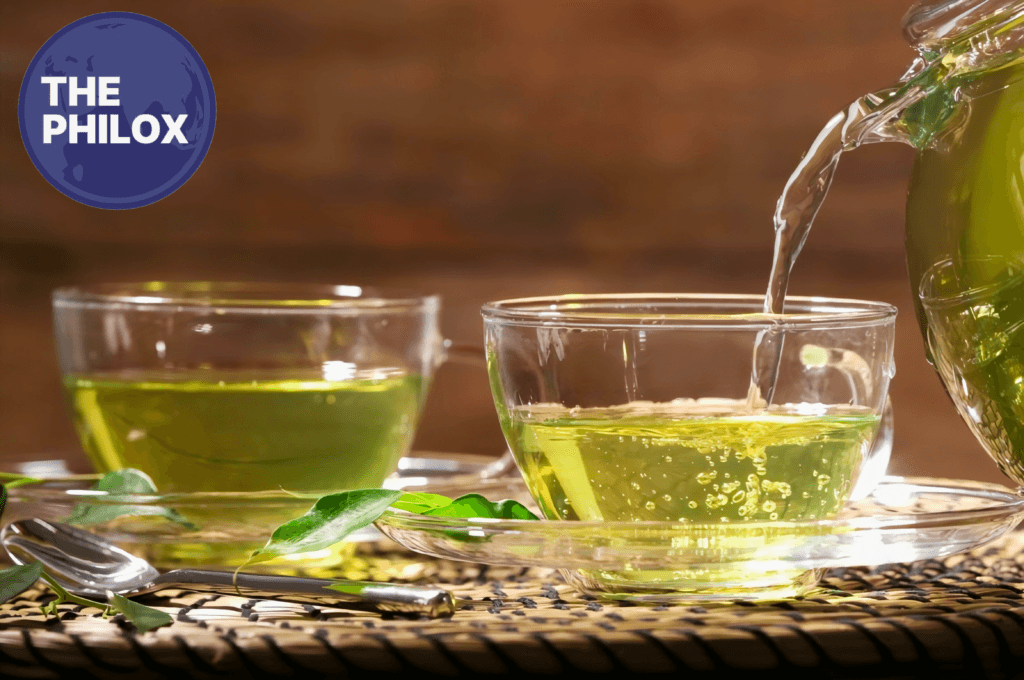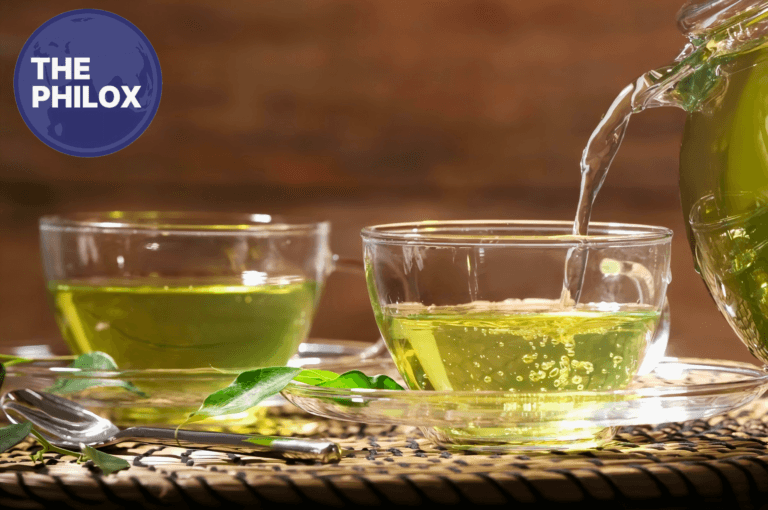
One of the most celebrated and healthy beverages in the world is green tea. It boasts a refreshing flavor, rich cultural heritage, and numerous health benefits that make it a favorite of tea enthusiasts worldwide.
However, have you ever wondered where this beverage comes from and how it differs from others? The secret lies in the Camellia sinensis plant, an evergreen shrub native to China.
Even more interestingly, this plant produces green, black, and oolong teas—the difference simply being in processing and oxidation.
Green tea is least processed, maintaining the high levels of antioxidants and natural flavors. Black tea is fully oxidized, so it is darker in color and tastes stronger.
Partial oxidation occurs in oolong tea that lies between the elements of both green and black tea.
In this general overview, the history of green tea, along with its varied cultural development throughout history, distinguished production processes and varieties, agro-practice, nutritional quality, and conventional use worldwide have been covered as well.
Emergence and worldwide spread of green tea
China: Ancient Origination
More than 5,000 years in a row has been the story of green tea. According to myth, Emperor Shen Nong, the popular herbalist in ancient China, first discovered it when some leaves from the Camellia sinensis plant fell into his boiling water.
Fascinated by its refreshing taste and invigorating effects, he used it as a medicinal drink.
During the Tang Dynasty (618–907 AD), green tea became an essential part of Chinese culture, enjoyed by scholars, monks, and royalty.
The Song Dynasty (960–1279 AD) further elevated tea culture, refining its production and ceremonial aspects.
Expansion to Japan and Beyond
In the 9th century, Buddhist monks were significant to introducing green tea into Japan. Among these was a monk called Eisai who introduced tea seeds to Japan in the 12th century, with the intention of enhancing its use in meditation for health benefits.
Over time, Japan created its unique culture around tea, particularly in the very ritualistic Japanese tea ceremony (Chanoyu) involving Matcha, finely ground powdered green tea.
It spread to Korea, Vietnam, and other parts of Asia until it reached Europe in the 16th century; there, among other reasons, it became very popular in aristocratic circles.
Today, it is consumed worldwide, mostly produced in China, Japan, India, and Sri Lanka.
How It Is Different from Black and Oolong Tea
The Role of Oxidation
Key differences exist in the oxidation level that distinguishes green tea from black and oolong. Oxidation affects the color, taste, and chemical properties of the leaves.
1. Green Tea- Steam or pan-fry the leaves quickly to stop any oxidation process so that it retains a green color, light flavor, and contains more antioxidants.
2. Black Tea- Mature for full oxidation leaving them dark in color and flavor with some malty or fruity notes.
3. Oolong Tea – Leaves undergo partial oxidation, offering a balance between the freshness of green tea and the richness of black tea.
Since green tea is the least processed, it retains the highest levels of polyphenols, catechins, and antioxidants, making it a powerhouse of health benefits.
Types of Green Tea and Their Unique Characteristics
Green tea comes in several varieties, each offering unique flavors, aromas, and health benefits based on how they are cultivated and processed.
Japanese Green Teas
1. Sencha – The most common Japanese green tea, featuring a slightly sweet, grassy flavor with a smooth finish.
2. Matcha- Green powdered tea derived from leaves which have been grown in the shade. Its flavor is often described as having a strong umami taste, high in antioxidants. It is used in the traditional Japanese tea ceremony.
3. Gyokuro- The premium shade-grown tea which gives a deep sweet flavor with more caffeine content than most other green teas.
4. Bancha- This is coarser tea picked later in the season, which is of milder earthy flavor and contains lower caffeine content.
1. Longjing (Dragon Well) – Probably the most iconic green tea coming from China; it has nutty, sweet taste and flat, hand-pressed leaves.
2. Gunpowder Green Tea – Heavily rolled tea leaves give a strong smoky flavor that is often utilized in Moroccan mint tea.
3. Biluochun – Delicate with aromatic flavoring, fruity notes, and florals, cultivated in Jiangsu province.
All of these variations offer a special experience, corresponding to different preferences and cultural backgrounds.
The Cultivation of Camellia Sinensis: How Green Tea is Grown
The Camellia sinensis shrub has specific cultivation requirements. The quality of the tea is determined by its natural growing environment.
Requirements
1. Weather – Green tea grows best in temperate zones and mountainous regions with slight precipitation and cold temperatures.
2. Soil – Lightly acidic, loose soil promotes the plant’s well-being and taste.
3. Height – Tea produced at higher altitudes is more complex and flavorful because the leaves grow more slowly and absorb more nutrients.
Major Green Tea-Producing Countries
The largest green tea producers include:
1. China – The world’s leading green tea producer, offering a vast range of tea varieties.
2. Japan – Specializes in high-quality, shade-grown teas like Matcha and Gyokuro.
3. India & Sri Lanka – Traditionally known for black tea but also producing green tea in regions like Darjeeling and Assam.
The Science-Backed Health Benefits of Green Tea
Green tea is revered for its powerful health benefits, backed by scientific research.
1. Rich in Antioxidants – Green tea contains catechins and polyphenols, which help combat oxidative stress and protect cells from damage.
2. Boosts Metabolism – Drinking green tea has been linked to increased fat burning and enhanced metabolic rate, aiding in weight management.
3. Supports Heart Health – Studies show that green tea can help lower cholesterol levels and reduce the risk of heart disease.
4. Enhances Brain Function – The combination of caffeine and L-theanine in green tea improves focus, alertness, and cognitive function.
5. Reduces Stress & Anxiety – L-theanine promotes relaxation without drowsiness, helping to reduce stress and improve mood.
6. May Lower Cancer Risk – Some research suggests that green tea’s antioxidants can help prevent certain cancers by reducing cell damage.
Due to these benefits, green tea has become an essential part of many health-conscious diets.
Traditional Tea Ceremonies in China and Japan
Green tea plays a profound role in Chinese and Japanese culture, where its preparation and consumption are deeply spiritual.
1. Chinese Tea Ceremony (Gongfu Cha) – Elaborate tea-brewing art focusing more on the process, smell, and taste.
2. Japanese Tea Ceremony (Chanoyu) – Strict ritual practice over Matcha: Harmony, Respect, Mindfulness.
These teas showcase the essence of green tea being cultural as well as religious and not for the sake of its health qualities only.
Global Green Tea Acceptance Increases
Green tea consumption has surged worldwide due to its health benefits and versatility. Recent trends include:
1. Matcha Lattes & Green Tea Extracts – Popular in wellness and fitness communities.
2. Bottled Green Tea Drinks – Convenient options for busy lifestyles.
3. Rising Demand in India – Traditionally a black tea market, India is now seeing increased green tea consumption.
The global green tea industry is expected to expand as more consumers embrace healthier beverages.
From ancient Chinese emperors to modern wellness enthusiasts, green tea remains a timeless and revered beverage. Its history, cultural significance, health benefits, and global appeal make it one of the most fascinating drinks in the world.
Whether you prefer a calming cup of Sencha, a rich Matcha latte, or a refreshing Longjing, green tea continues to symbolize wellness, tradition, and refreshment.
Stay Connected and Share Your Stories
For all those inspired by stories of resilience and ambition, follow us on X/Twitter and on Instagram . For those with untold stories that you would love to share, please send them to contact@thephilox.com
